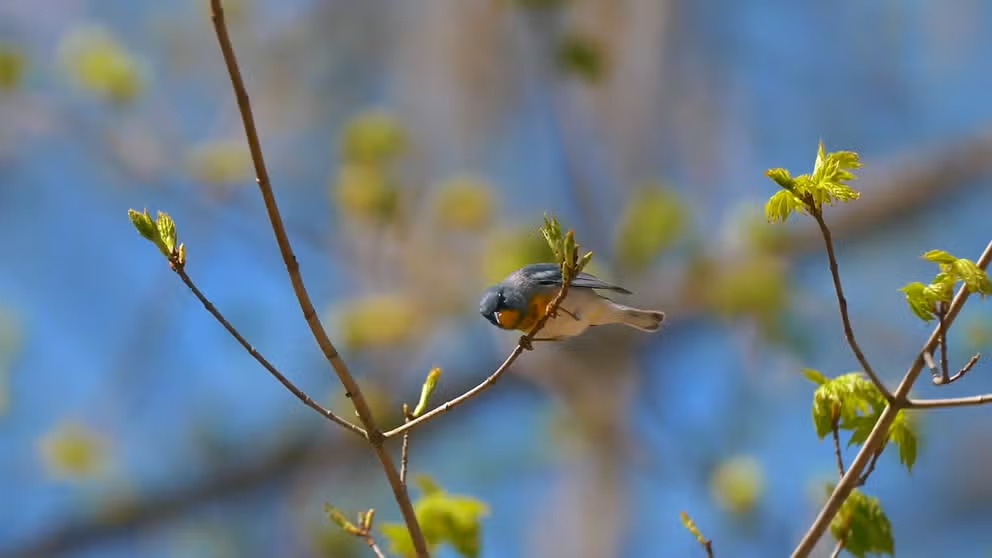How birds navigate the clouds
Clouds can mean bad news for our feathered friends
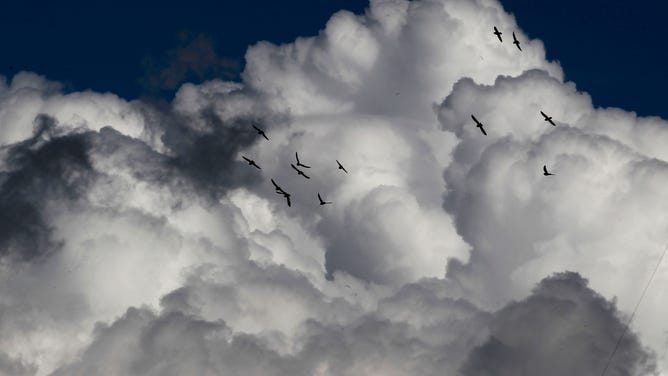
Birds take flight against a cloud-filled sky in northern California.
(Michael Macor / The San Francisco Chronicle / Getty Images)
Clouds. For humans, they mostly mean storms, shade or curious shapes that spark our imaginations.
For birds, clouds mean much more as the two occupy the same space — the sky.
Under, over
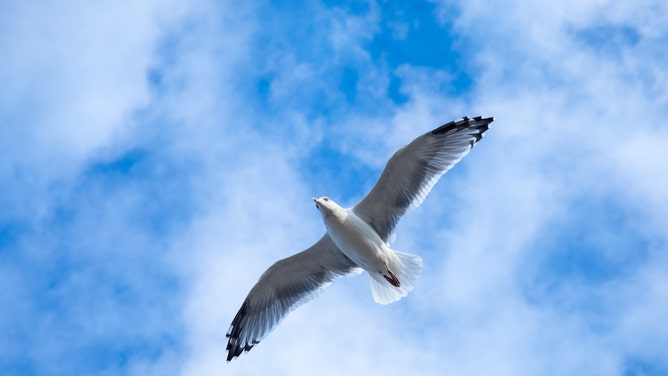
Close up underside of wings and feathers of a Herring Gull off of Cape Cod, Massachusetts.
(Tim Graham / Getty Images)
What we see from the ground as gentle white puffs floating up above can actually be quite hazardous to birds.
"Birds don't really like flying through clouds," says Geoff LeBaron, the Christmas Bird Count Director for the National Audubon Society. "They prefer to be able to see where they're going and what's around them and what threats might be there."
Songbirds and other small birds tend to fly at a lower altitude and try to avoid flying through low-lying clouds.
"They will try to fly lower and lower until the clouds just get too low, and at that point they'll drop to a point of safety on the ground," says LeBaron.
Bird Songs of Spring
Day length, sunlight and instinct give the birds their seasonal cue.
LEARN ABOUT THE SUN'S ROLE IN BIRD MIGRATIONS AND BIRD SONGS
While smaller birds fly below the cloud layer, some larger birds fly above it.
"There are species of waterfowl and geese and swans and cranes and things like that actually fly over the Himalayan mountains in Asia," according to LeBaron. "They've been tracked at up to twenty-eight to thirty-four thousand feet, so we're talking airline altitude for some of these birds to get over the mountains."
Like the birds that fly low to avoid the clouds, birds that fly high above the clouds largely do so because of clearer visibility.
UV rays and precipitation
In addition to affecting birds’ ability to see, clouds can prevent birds from more fully sensing and having control over their surroundings.
According to LeBaron, birds use a number of cues to help them navigate. One of those cues is ultraviolet (UV) radiation, which birds can see and use to navigate during the daytime. So when clouds roll in and create shade, they’re blocking some of the sunlight’s UV rays and thereby partially blocking birds’ use of the UV cue.
LEARN ABOUT THIS OASIS OF BIODIVERSITY NEAR WASHINGTON, D.C.
Ideally, birds would like to be able to "shift from one cue to another," says LeBaron.
Clouds can also bring inclement weather.
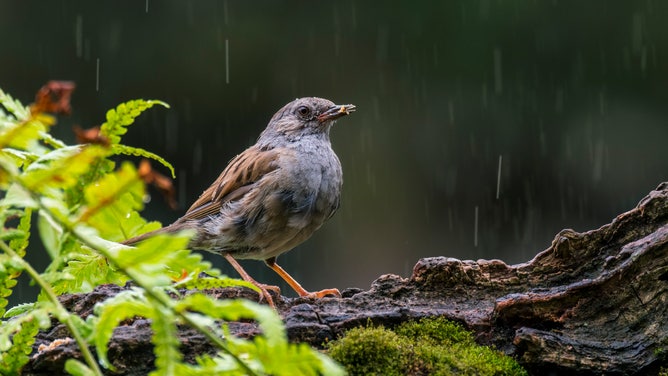
Rain sprinkles down on a dunnock resting on a tree.
(Philippe Clement / Arterra / Universal Images Group / Getty Images)
Rain can be difficult for birds to fly through. Although feathers largely make most birds water-tight, it’s the weight of rain drops and the frequency of their fall that can drive birds from the sky. Also, the low atmospheric pressure that serves as the backdrop for rainstorms can make taking flight difficult for birds.
Snow can also keep some birds grounded. However, snow can fall more lightly than rain, so birds may not need to seek shelter from snowfall as urgently.
Hail is another story. According to LeBaron, if the hail is large enough, it can be fatal to small birds.
Downtown clouds
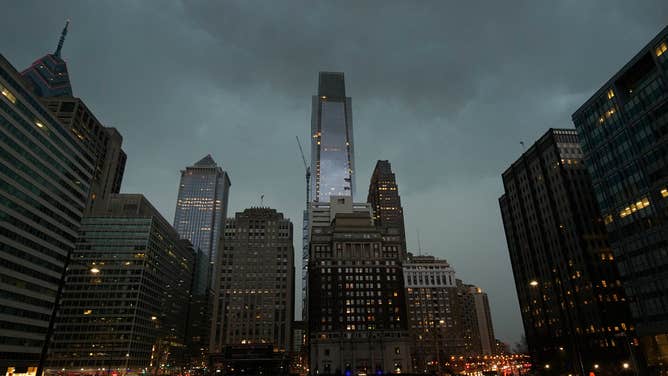
Heavy thunderstorm clouds fill the sky over Center City Philadelphia.
(Bastiaan Slabbers / NurPhoto / Getty Images)
Clouds, in general, are not so great for birds.
In fact, one tragic example of clouds affecting bird flight occurred in October 2020 in Philadelphia. In a small part of downtown, more than 1,000 migratory birds crashed into buildings within a 24-hour period.
As the birds were migrating, they were drawn to the twinkling lights of the city. However, clouds were lying low enough to veil the buildings where the lights were coming from, preventing the birds from having a clear view and causing them to crash into the buildings.
"This is one of the problems that happens during migration with birds that are migrating through urban areas," says LeBaron.

Cormorants fly behind the One World Trade Center in New York City.
(Gary Hershorn / Getty Images)
To help mitigate collisions like these, LeBaron says "Audubon and many other organizations are working with city managers for what we call Lights Out programs at night during key nights during bird migration."
So until humans can control the skies, ground-level measures are being taken to help our feathered friends.
